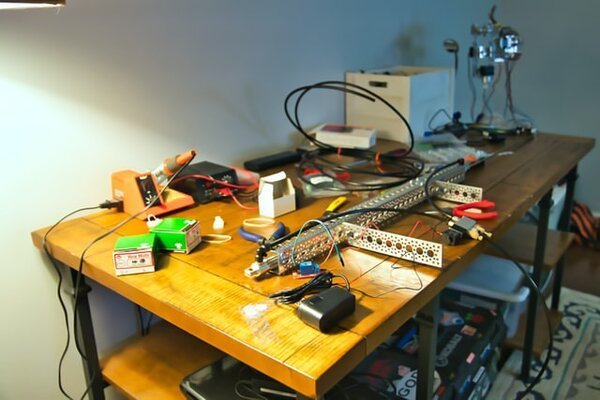Can you repair the motorcycle starter relay? Yes! With the right tools and the right people guiding you, a starter relay can be easily repaired and replaced.
But you must understand, all problems cannot be solved. Ultimately, you will have to replace the starter relay. If you do, however, the process is quite simple and doesn’t even require a professional.
So, what is a starter? And how do you know yours is broken? And most importantly, how do you test a starter kit for the current? Here’s our complete guide on motorcycle starter relay testing and repair.
What Is A Starter Relay?
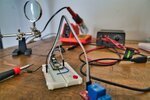
You may have heard the word often, but what is a starter relay? A starter relay is a small electronic component that works on the concept of a relay.
A relay is like a “remote switch” that lets you control a high-current circuit with a low-current one and vice versa. Your starter relay controls the high-current starter circuit with the low current from the ignition switch.
Is A Starter Solenoid the Same as The Starter Relay?
Does your bike use a starter solenoid? You might be wondering with it is. They’re often mistakenly attributed as starter relays since they’re both relays. But there are a lot of differences between the two. Here’s how both of them work:
Starter Relay Vs. Starter Solenoid:
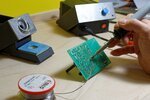
The first and most obvious difference between starter relays and starter solenoids is the size. Starter solenoids are no doubt much bigger.
Internally, the starter relay acts like a regular one. It has a coil of wire on one end wound around a magnetic core and an armature on the other end. When current passes through the coil, it creates a magnetic field that moves the armature. This acts as a switch and closes or opens the circuit.
The starter solenoid works on a similar principle, except both ends are made of coils of wire wrapped around a single magnetic core. When current passes through one coil, it induces a current in the other. This causes the core to move out, which acts as a plunger or armature.
The moving of the core does two things. First, it closes the circuit, acting as a switch, much like the armature in the starter relay. Secondly, the force pushes the pinion gear, which then engages with the flywheel. In this way, it acts both as a relay and a gear actuator.
Importance of The Starter Relay:
The start relay is an important device that connects your motor to your ignition. Without it, you cannot turn on the motor at all.
Motor? Don’t vehicles work on engines? Well, yes, but the initial driving force for the engine has to come from somewhere. And a motor is the best choice for that.
But motors are power-hungry devices. When you turn your ignition switch, the current produced is not enough to turn the motor on.
And that’s where the starter relay comes in. It converts the small current that the ignition switch generates into a larger current to power the motor.
In this way, the power-hungry motor circuit and the weak, fragile ignition circuit are connected without frying each other.
What Is the Starter Relay Function?
What does the starter relay do? It allows your ignition switch to power the heavy motor that kick-starts your engine.
If your relay switch is not working correctly, your motor will not receive an appropriate amount of current. Since the relay is crucial even to start the engine, it’s no surprise your vehicle does not work, as if it’s broken.
Where Is the Starter Relay Located?
The exact location varies depending on the model of your vehicle. It’s best to consult the manual or the original manufacturer to find the location. But there are a few key places you can look before that.
In most vehicles, the starter relay will be placed under the hood inside the fuse box. But that’s on cars, though. On a motorcycle, you’ll usually find the starter relay behind the side panel.
Symptoms of A Bad Starter Relay:
Before you learn how to repair a starter relay, you must know what the signs of a bad relay are:
1. No Crank or Start:
The first and most obvious sign of a malfunctioning starter relay is, your vehicle won’t start. This is due to the motor not receiving sufficient power to kick-start the engine.
No cranking is also the sign of a dead battery, so you’ll need to narrow down the problem further. Try to turn on the bike’s accessories, like the stereo or the lights.
2. Irregular Starts:
If your vehicle does not start on the first attempt but starts a few attempts later, your starter relay fails. Usually, if your vehicle starts a few attempts later, you may have some loose connections.
3. Constant Clicking Noise:
Sometimes, your starter relay may produce some clicking sounds. This indicates that the coil inside the relay is working fine, but the contacts are failing. This is usually the case when the relay cannot produce enough current to drive the motor.
4. Starter Stays On:
Another common occurrence is, the starter circuit stays on. The engine doesn’t need the starter circuit after the initial start. As such, the starter relay should only turn on when you’re turning the ignition switch. If it stays on longer, it could indicate a short circuit.
Causes of Starter Relay Malfunction:

Dirt and Debris:
It’s very unlikely that dirt and debris will get inside the relay, especially considering how well hidden and airtight it is. But it’s not entirely impossible. And eventually, given enough time, the starter relay will accumulate some dust. This dust will hamper the regular movement of the contacts and produce a lot of clicking and buzzing sounds.
Broken Leads:
One common reason that starter relays go bad is, the leads become broken or melted. Your starter relay requires current to work, no matter how small. If a certain amount of current does not reach the relay, it won’t operate as intended. Broken leads can be caused by general wear, heat, corrosion, and even mouse biting.
Intense Heat:
Heat is the biggest enemy of any electronic component. It not only melts the leads but also warps the metal structures inside and the wiring. Your engine is practically a giant furnace. And since, on a bike, everything is compact, it’s no surprise that relays tend to melt quite often.
Corrosion:
Corrosion plays a vital role in ruining a perfectly good really. Moreover, corrosion can be caused by age and lack of maintenance, sitting for long periods, and humidity. This not only creates resistance in the relay but may also prevent the contacts from touching.
Time:
Lastly, starter relays can go bad due to the toll of time. The wires will melt, the iron will rust, and dust and humidity will eventually get the better of your relay. No matter how well you maintain it, every component is bound to go bad at some point.
How to Fix A Starter Relay?
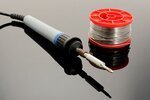
Can you repair the motorcycle starter relay? Yes, and here’s how:
Testing The Starter Relay:
The first thing you must do is test the relay. You want to be extremely sure that it has gone bad. Here’s how you can test the starter relay:
Preliminaries:
First and foremost, ensure the vehicle is safely parked with the gear in a neutral position. Then, check if the battery is dead. You can either try to use the vehicle’s accessories or a voltmeter. Next, locate the relay and examine any superficial problems such as melted leads, broken contacts, etc.
If you don’t notice anything wrong with the start relay at first sight and the battery is working fine, too, you’ll need to run a few more tests.
Testing Two-Connector Relays:
If your relay was mounted on the fender wall, there’s a high chance it’s a two-connector relay.
Your relay will have 2 terminals on either side. Locate the primary terminals and connect them to the battery.
Now, bring out a multimeter and set it to read resistance. Connect the secondary terminals of the relay to the probes of the multimeter. Connect the primary side to the battery as before.
If the multimeter does not read or the reading is too high, your secondary side is the problem.
Repeat the same on the primary side by placing the probes on the small posts. The resistance shouldn’t be higher than 5 ohms, and if it is, then your relay is damaged.
Testing Four-Connector Relays:
If your relay uses 4 primary connectors, you’ll need to run different tests. Here’s how:
First, identify the probes that are the primary terminals. You can do this by using a multimeter on the resistance setting. Connect the probes to any two pins and check the resistance. Those that have a high resistance between them will be the primary terminals.
If the resistance of this side is too high (higher than 5 ohms), your primary side is faulty. You can perform the same test on the secondary side. If the resistance is too high, there is no continuity.
Can You Repair the Motorcycle Starter Relay?
So, it all boils down to this: can you repair the motorcycle starter relay? Yes, but it’s better to replace it.
If the problem is in the wiring, you can repair the wires by cutting them from fault and soldering them together. Moreover, if the insulation has melted, you can reinsulate it using any suitable tape or shrink wrap.
Moreover, if the problem is with the relay, you’ll most likely need to replace it. Now, if the problem is merely some dust or corrosion, you can get rid of it using baking soda and some steel wool. But if the problem is broken or warped contacts, a starter relay replacement is the most advisable.
How to Replace A Starter Relay?
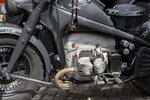
Replacement Process:
Before you install the new starter relay, you must remove the old one. Locate the starter relay and disconnect the battery terminals using a wrench. Then, remove the leads by unfastening the nuts bolted to the two large and two small posts. Next, remove the mounting screws and then finally remove the relay.
To install a new relay in the fuse box, you must match the relay pins to those on the mount. Push the relay down once the pins are matched. Look at the new relay’s user guide to find out what pin goes where.
Now, replace the covering and then reconnect the battery terminals.
For a fender-mounted relay, you’ll need to first screw in the mounting screws that go onto the fender. Connect all the cables you had removed, attaching each wire to the appropriate post. Lastly, test the relay by trying to start the vehicle up.
Wiring:
During the replacement process, the wiring is the most crucial. Your relay will most likely have four posts, two big ones and two small ones. Identify the primary and secondary sides of the relay. Then, make the connections as follows:
- Big post on the primary side: to starter cable.
- A small post on the primary side: to the “S” terminal of the ignition switch.
- Big post on the secondary side: to the positive terminal of the battery.
- A small post on the secondary side: to ground.
FAQs:
Is It Easy to Replace A Starter Relay?
Yes, it’s as simple as pushing it in and connecting a few wires.
How Long Does A New Starter Relay Last?
A typical starter relay can last for upwards of 100 miles.
What Is the Cost of a New Starter Relay?
You can find a new starter relay for as little as $20. However, if you’re getting it done from a mechanic, the cost can go as high as $50.
Conclusion
A starter relay is a small yet very important component on your bike. Without it, your engine will not start. And the worst part is that most people chalk it up to a dead battery without even checking the battery!
Now you know how can you repair the motorcycle starter relay. That’s why it’s important to keep your starter relay in good shape. But no one can maintain their relay for long. So, can you repair the motorcycle starter relay? Yes! With a little effort and the correct guidance, you can even do the job at home!
Now buy your new starter relay and replace it as soon as possible!

